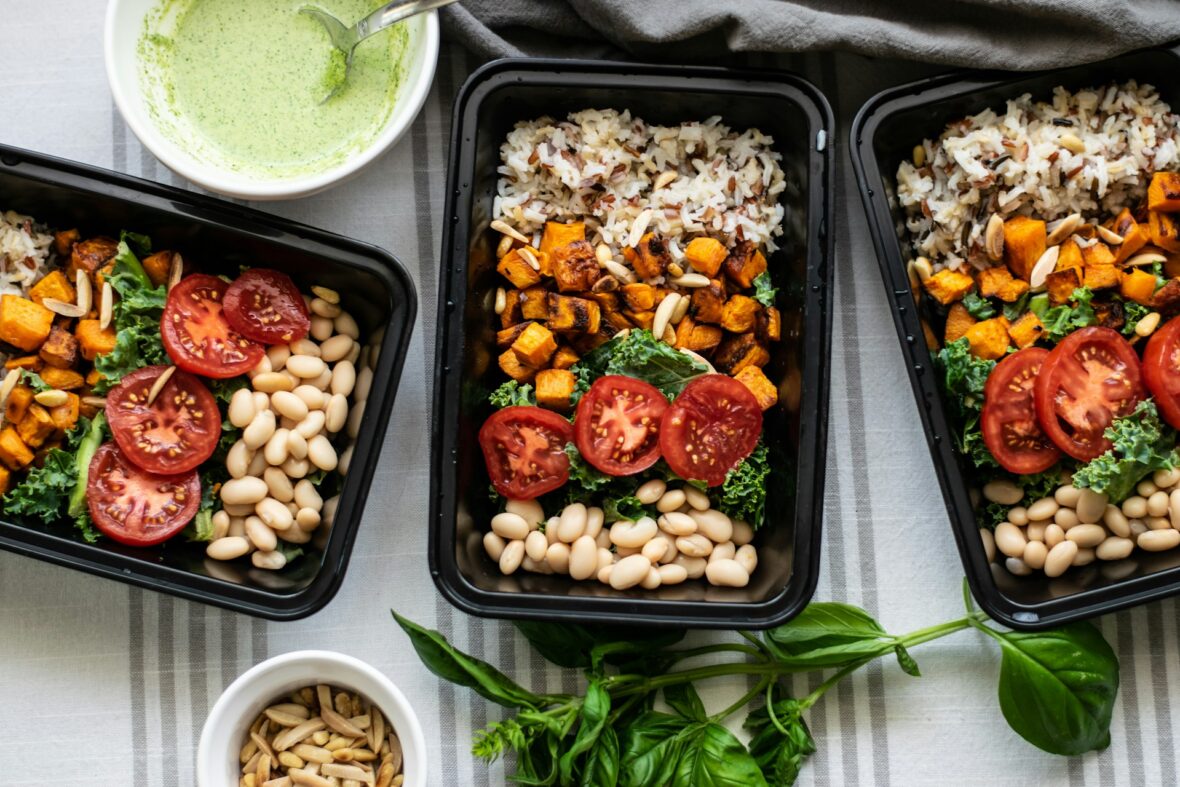Spending hours each week deciding what to eat, shopping for ingredients, and cooking individual meals can drain both your time and energy. For busy professionals, parents, and anyone juggling multiple responsibilities, meal prep offers a practical solution that transforms chaotic weeknight dinners into organized, nutritious experiences.
Meal prep involves preparing multiple meals or meal components in advance, typically over a weekend, to streamline your eating routine throughout the week.
This approach not only saves precious time but also helps maintain a balanced diet when life gets hectic. Rather than reaching for takeout or processed convenience foods, you’ll have wholesome, homemade options ready to heat and enjoy.
The beauty of meal prep lies in its flexibility. You can prep entire meals, prepare individual components to mix and match, or focus on specific elements like proteins or grains. The key is finding a system that works for your schedule, dietary preferences, and cooking comfort level.
Essential Preparation Strategies for Streamlined Cooking
Planning Your Weekly Menu
Success starts with strategic planning. Begin each week by reviewing your schedule to identify particularly busy days when you’ll need quick meal solutions. Consider your upcoming commitments, workout plans, and social events that might affect your eating schedule.
Create a simple meal planning template that includes breakfast, lunch, dinner, and snacks for each day. Focus on time-saving recipes that share similar ingredients to minimize grocery shopping and reduce food waste. For example, if you’re buying bell peppers, plan to use them in both your Monday stir-fry and Wednesday fajita bowls.
Smart Grocery Shopping Techniques
Transform your meal plan into an organized shopping list grouped by store sections: produce, proteins, pantry items, and frozen goods. This approach speeds up your shopping trip and ensures you don’t forget essential ingredients.
Consider purchasing proteins in bulk when they’re on sale, then portioning and freezing them for future meal prep sessions. Frozen vegetables can be just as nutritious as fresh ones and often last longer, making them excellent backup options for busy weeks.
Time-Efficient Cooking Methods
Batch cooking forms the foundation of effective meal prep. Dedicate two to three hours on weekends to prepare multiple meal components simultaneously. Use your oven, stovetop, and slow cooker concurrently to maximize efficiency.
Start with items that take the longest to cook, such as roasted vegetables or slow-cooked proteins. While those are cooking, prepare quicker items like chopped vegetables, cooked grains, or simple sauces. This layered approach helps you accomplish more in less time.
Time-Saving Recipes That Deliver Nutritional Balance
Protein-Packed Foundation Meals
Sheet pan proteins offer incredible versatility with minimal cleanup. Season chicken thighs, salmon fillets, or tofu steaks with different spice blends, then roast them alongside seasonal vegetables. Each protein can be paired with various sides throughout the week to create diverse meals.
Slow cooker proteins like pulled pork, shredded chicken, or lentil stews provide multiple servings with minimal active cooking time. These proteins work beautifully in different contexts: over salads, in wraps, with rice bowls, or as sandwich fillings.
Versatile Grain and Vegetable Combinations
Prepare large batches of quinoa, brown rice, or farro that can serve as bases for multiple meals. These grains store well in the refrigerator for up to five days and can be quickly reheated or eaten cold in salads.
Roasted vegetables maintain their texture and flavor better than many other preparation methods when stored and reheated. Try combinations like roasted sweet potatoes with Brussels sprouts, or Mediterranean vegetables with zucchini, bell peppers, and red onions.
Quick Assembly Breakfast Solutions
Overnight oats eliminate morning decision fatigue while providing sustained energy. Combine rolled oats with milk or yogurt, then add different toppings throughout the week: berries and nuts on Monday, banana and peanut butter on Tuesday, or apple cinnamon on Wednesday.
Egg muffins loaded with vegetables can be baked in advance and reheated quickly each morning. Mix beaten eggs with chopped spinach, peppers, cheese, and herbs, then bake in muffin tins for perfectly portioned breakfast options.
Storage Solutions and Food Safety Best Practices
Container Selection and Organization
Invest in high-quality glass containers with airtight lids that can transition from refrigerator to microwave safely. Glass containers don’t retain odors or stains like plastic alternatives and allow you to see contents at a glance.
Portion individual meals into single-serving containers to grab and go easily. For family meal prep, larger containers work well for components that will be assembled at mealtime. Label containers with contents and preparation dates to track freshness.
Maximizing Freshness and Flavor
Most prepared meals maintain optimal quality for three to four days in the refrigerator. Foods with higher moisture content, like salads with dressing, should be consumed within two days, while heartier dishes like stews or casseroles can last up to five days.
Store salad greens separately from dressings and wet ingredients to prevent wilting. Keep cut fruits and vegetables in airtight containers with paper towels to absorb excess moisture. Herbs stay fresher when stored like flowers in water containers.
Safe Reheating and Serving Practices
Reheat foods to internal temperatures of 165°F to ensure food safety. Add a splash of water or broth to prevent rice and grains from drying out during reheating. Some foods, like salads or cold grain bowls, taste best when eaten cold or at room temperature.
Consider which foods reheat well versus those better eaten fresh. Crispy foods like roasted vegetables may lose texture when reheated, while soups, stews, and grain dishes often taste even better after flavors have had time to meld.
Building Sustainable Weekly Routines
Creating Realistic Prep Schedules
Start small if you’re new to meal prep. Begin by preparing just lunches for the work week, then gradually expand to include dinners or breakfasts as the routine becomes natural. Trying to prep every meal immediately can feel overwhelming and lead to burnout.
Choose a consistent prep day that aligns with your schedule. Many people find Sunday afternoons work well, but Wednesday evening prep sessions can work for those with weekend commitments. The key is consistency rather than perfection.
Adapting to Seasonal Changes and Preferences
Rotate your meal prep recipes seasonally to take advantage of fresh, affordable produce. Summer meal prep might focus on lighter options like grain salads and grilled proteins, while winter prep could emphasize warming stews and roasted vegetables.
Pay attention to which meals your family eats and enjoys. There’s no point in preparing foods that consistently get thrown away. Adjust your repertoire based on genuine preferences and feedback.
Troubleshooting Common Obstacles
When meal prep feels tedious, remind yourself of the weekday stress it eliminates. Consider involving family members or roommates in prep sessions to make the process more social and distribute the workload.
If you frequently run out of prepped meals before the week ends, you may need to increase portion sizes or prepare additional backup options. Keep simple ingredients on hand for quick supplemental meals when needed.
Transform Your Weekly Eating Experience
Meal prep represents more than just cooking efficiency; it’s an investment in your health, time, and peace of mind. When you have nutritious meals readily available, you’re more likely to maintain a balanced diet even during stressful periods. The time you spend preparing on weekends pays dividends throughout the busy weekdays ahead.
Remember that perfect meal prep doesn’t exist. Some weeks will be more successful than others, and that’s completely normal. Focus on progress rather than perfection, and adjust your approach based on what works best for your lifestyle and preferences.
Start with one or two simple recipes this weekend, and gradually build your meal prep confidence and repertoire. Your future self will thank you for the delicious, healthy meals waiting in your refrigerator.






